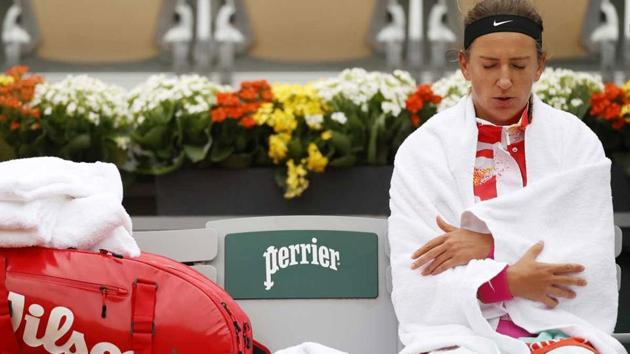Autumn in Paris: Get ready for fewer winners, sluggish rallies at French Open
It’s an odd sight for the first two days at the 2020 Roland Garros; players sporting body warmers, leggings and even jackets - usually worn during warm-ups - while playing and limited spectators largely wrapped in their hooded winter wear.
It perhaps sums up the situation aptly when even Jannik Sinner, a national age-group slalom champion in Italy, labels conditions in Paris as “not easy”. It’s cold, wet and windy for this unprecedented French Open, postponed to autumn from its annual summer slot of May-June due to the pandemic. The sunshine has made way for gloom, not just with the weather but also among the players.

It’s an odd sight for the first two days at the 2020 Roland Garros; players sporting body warmers, leggings and even jackets - usually worn during warm-ups - while playing and limited spectators largely wrapped in their hooded winter wear. Rain is forecast on almost all days throughout the tournament with temperatures hovering around 15-18 degrees Celsius. While it’s a touch kinder inside the main Philippe-Chatrier court thanks to the new retractable roof, it’s harsh on the other courts open to the elements.
Beyond the far from ideal weather, it’s the impact it has had on the clay courts that is bothering many players. The cold has made the courts slower, the balls heavier and, as a consequence, rallies much more taxing. On a surface that already takes a toll on the body, it’s a double whammy, more so with players coming off long layoffs due to the suspended professional tour.
The conditions also partly take away the trademark play on clay; the spin and bounce of the ball under hot conditions and sliding by players on a dry surface (think Novak Djokovic, Rafael Nadal, Dominic Thiem, etc.). With a moist ball and damp court, neither of that will be in currency as much as before.
India’s doubles specialist Divij Sharan, who has had a few practice sessions on the outside courts to tune up for his opening round with Korean partner Kwon Soon-woo, dissects the conditions. “The ball travels slower through the air when it’s cold and gets heavier when it catches moisture from the court or air in wet conditions. Conditions become slower in both cases,” Sharan said over phone from Paris.
It’s precisely why Nadal, with a record 12 French Open titles, isn’t sounding too confident about defending his crown in “the most difficult conditions for me ever”. A clay-court maestro, the Spaniard’s topspin-heavy forehand shots and the fizz he generates on the ball to manufacture winners will not be as routine this time. That Nadal is likely to play most of his matches under the roof of the Philippe-Chatrier court might work in his favour.
Sharan, a southpaw himself, expects the winners count to be lower this French Open. “It’s a lot colder. It’s been raining a lot as well… And slower the conditions, the harder you have to work to win the point. There will be longer rallies and it will not be so easy to hit aces and winners,” he said.
American John Isner likened the conditions to slow hard courts where the advantage of a good slider will be nullified. “… the really good movers can’t slide around like they normally can because the clay’s really damp. It kind of played like a slow hard court, I thought. There wasn’t much sliding,” Isner said after his first round win against Elliot Benchetrit in conditions he termed as a “bit nasty”.
New balls
What also compound the players’ concerns are the new balls. Roland Garros organisers have switched to Wilson balls starting this year from Babolat, used for almost a decade. The feedback from players is that the new balls are heavier and slower, adding to the discomfort of the heavy conditions. The Wilson website describes the Roland Garros Clay Court Tennis Balls as “boasting a core designed for longer rallies”. Britain’s Dan Evans was more colourful in describing the balls, saying he “wouldn’t give to a dog to chew”.
Having practiced with Wilson balls at home in warmer Mallorca, Nadal could feel the added heaviness of the ball and feared players would be vulnerable to elbow and shoulder injuries. This is the first clay-court event of the curtailed season for many players. Some of them are also carrying the odd niggle, like 23-time Slam winner Serena Williams with her Achilles tendon injury.
While there is consensus among most players about the weather and court conditions, the ball seems to be about one’s choice. US Open semi-finalist Daniil Medvedev, for example, doesn’t mind the heavy balls with less scope for spin as it suits his style of play. “It’s normal that when one player doesn’t like something, second one maybe is going to like it. So far I like it,” he said a few days ago.
Sharan too said there was nothing wrong with the balls except they are different to what players have been accustomed to over the years at Roland Garros. “It’s just a different make, so it changes the playability a bit specific to conditions at the French Open in the previous years.”






